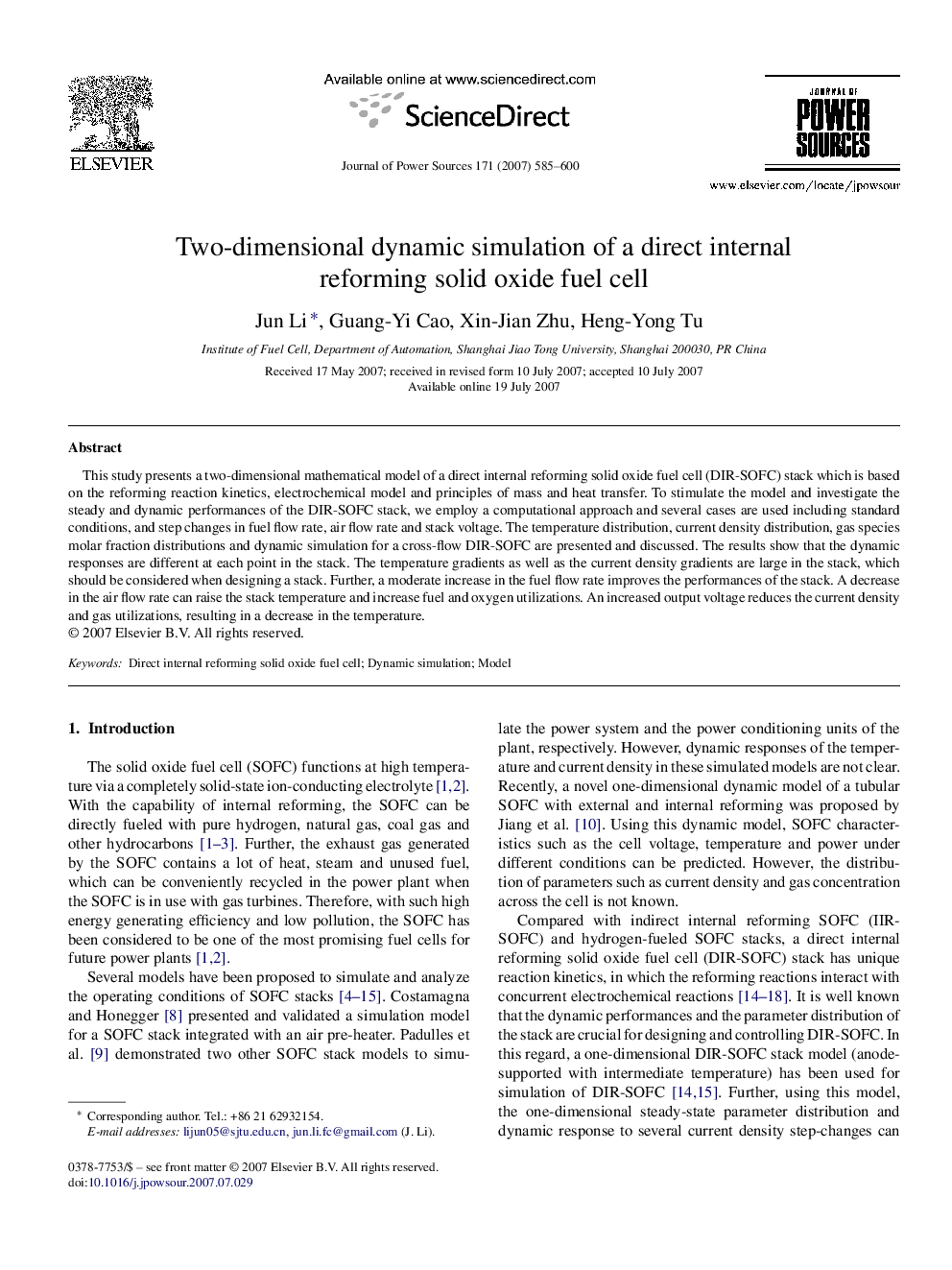| Article ID | Journal | Published Year | Pages | File Type |
|---|---|---|---|---|
| 1286372 | Journal of Power Sources | 2007 | 16 Pages |
This study presents a two-dimensional mathematical model of a direct internal reforming solid oxide fuel cell (DIR-SOFC) stack which is based on the reforming reaction kinetics, electrochemical model and principles of mass and heat transfer. To stimulate the model and investigate the steady and dynamic performances of the DIR-SOFC stack, we employ a computational approach and several cases are used including standard conditions, and step changes in fuel flow rate, air flow rate and stack voltage. The temperature distribution, current density distribution, gas species molar fraction distributions and dynamic simulation for a cross-flow DIR-SOFC are presented and discussed. The results show that the dynamic responses are different at each point in the stack. The temperature gradients as well as the current density gradients are large in the stack, which should be considered when designing a stack. Further, a moderate increase in the fuel flow rate improves the performances of the stack. A decrease in the air flow rate can raise the stack temperature and increase fuel and oxygen utilizations. An increased output voltage reduces the current density and gas utilizations, resulting in a decrease in the temperature.
